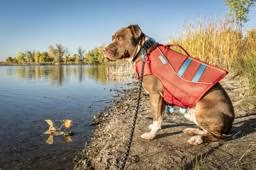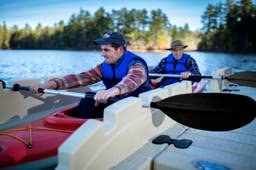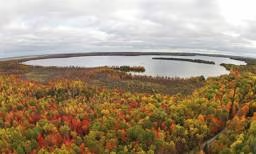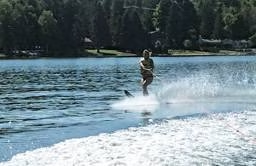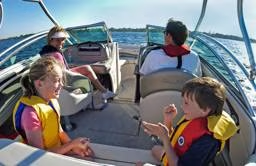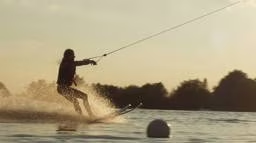
Photo Credit: kbatx
You can’t go on a lake these days without seeing a wakeboarder flying through the air. They go cruising by in a flashy boat with a fancy tower and the tunes crankin’. The rider – dressed in clothes that may seem more fit for MTV – cuts out to the side, drifts effortlessly back in to the wake and then, bam, he goes flying 10 feet above the water flipping and spinning in ways you can’t even describe.
Then you think to yourself, man, how do they do that? How do wakeboarders rise to such incredible heights?
It all begins with the right equipment. The most important part of the equation is the boat. It used to be that any old boat would do, and it will if wakeboarders just want to get a little air. But if they want that bone-jarring, arm-flapping, stomach-churning air that makes the boat look smaller as they go up, they need a serious wakeboard boat.
See also Deck Boats for the Cabin
Today’s wakeboard boats are far more specialized than the wakeless ski boats used in the past. They now include towers for attaching the rope, ballast systems to make the boat sit deeper in the water to create more wake, and a kickin’ stereo system to pump up the wakeboarders for their ride.
In addition to a boat to tow them, wakeboarders need something to hold on to. The rope of choice is non-stretch and has a wide handle. The typical length is between 65 and 80 feet long depending on the boat and speed. Typical boat speeds range from 18 to 22 miles per hour – slower is better. For an effective ride, the boarder should ask the driver to try to go straight and hold a steady speed (easier said than done).
Also vital are modern multi-fin boards, with high-tech lace-up bindings that keep them stuck to the wakeboarders’ feet. Vests to protect their ribs and keep them afloat in case of a miscalculation are also a must. Oh, and all good boarders know this: If their shorts don’t cover their thighs, they are out of style and it doesn’t matter how high they go, people will point and laugh.
Once wakeboarders have sussed out their equipment, they are at least looking the part. But what now? Sure, they can go out there and just wing it, but they’ll probably end up flailing and ultimately bashing and contorting their bodies in ways they never thought possible. The ones who are good at it probably got some instruction, whether from an experienced boarder, qualified professional or from an instructional video or magazine. There are even camps dedicated to teaching the sport. Wakeboarding is definitely one of those sports that looks a lot easier than it is.
The right instructor teaches wakeboarders that body position, board control and edging are critical. Learning how to leverage their body against the pull of the boat is the key to harnessing the energy needed for big air. When learning, wakeboarders must take their time and learn how to ride the board and cross the wakes comfortably before going for big air. Skipping steps will get them into bad habits that are a lot harder to break than learning the right technique from the start.
OK, so they can ride a board, but can they catch air? At this point, it’s all about nailing the timing. Every new rider seeking big air typically makes the same mistake. They get out wide on the boat, look at the wake and cut as hard as they can. All they get is a lot of speed and not much height. To get the big air, they need to get wide, drift in slowly from the outside with their knees bent, all while maintaining a strong body position. They should have the rope tight when they reach the wake by holding edge against the boat. Then as they ride up the wake they stand tall and push against the energy of the wake. Successful wakeboarders try to think about the wake pushing them up as opposed to jumping off the wake.
So that’s how it’s done. Next time a wakeboarder passes you on the lake, you won’t wear a puzzled look on your face. In fact, you can shout out terms like “sweet, dude,” “nice whirly,” and “monkey five.” The 8-year-old in your group will be impressed.
If, on the other hand, you decide to join the hundreds of thousands of riders out there and try wakeboarding, go for it! But watch out: It’s like snowboarding or golfing – you won’t want to stop. Before you know it, you’ll have a complete line of gear and will be keeping up with the latest trends. It’s a whole new world out there. And what better way is there to spend a day on the lake hangin’ with the family?
If, on the other hand, you decide to join the hundreds of thousands of riders out there and try wakeboarding, go for it! But watch out: It’s like snowboarding or golfing – you won’t want to stop. Before you know it, you’ll have a complete line of gear and will be keeping up with the latest trends. It’s a whole new world out there. And what better way is there to spend a day on the lake hangin’ with the family?
You don’t have to be 20 years old with abs of steel to do this, either. People of all shapes, sizes and ages have discovered how fun this sport can be. Once you get a feel for that air, it will consume you. You may get smacked around a bit while learning but remember, it’s only water. Enjoy.
PJ Marks has written for “Wakeboarding” and “Water Ski” magazines, and is the former owner of The Wakeboard Camp in Clermont, Fla. (www.wakeboardcamp.com). He has been the color commentator for the Pro Wakeboard Tour on ESPN and narrated several instructional videos.
PJ Marks has written for “Wakeboarding” and “Water Ski” magazines, and is the former owner of The Wakeboard Camp in Clermont, Fla. (www.wakeboardcamp.com). He has been the color commentator for the Pro Wakeboard Tour on ESPN and narrated several instructional videos.



